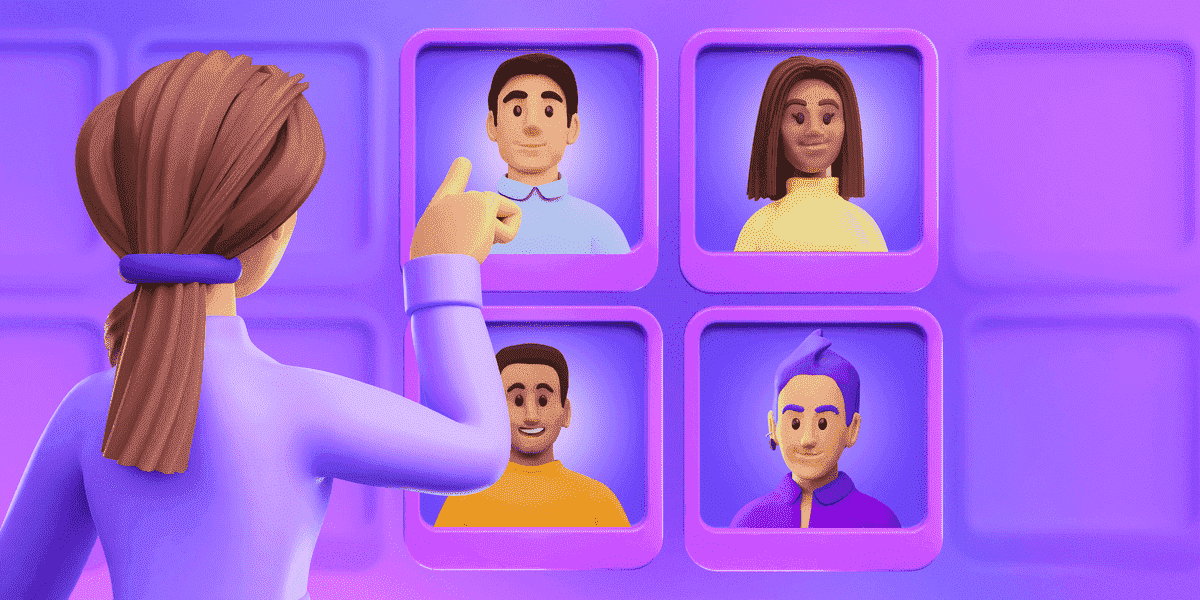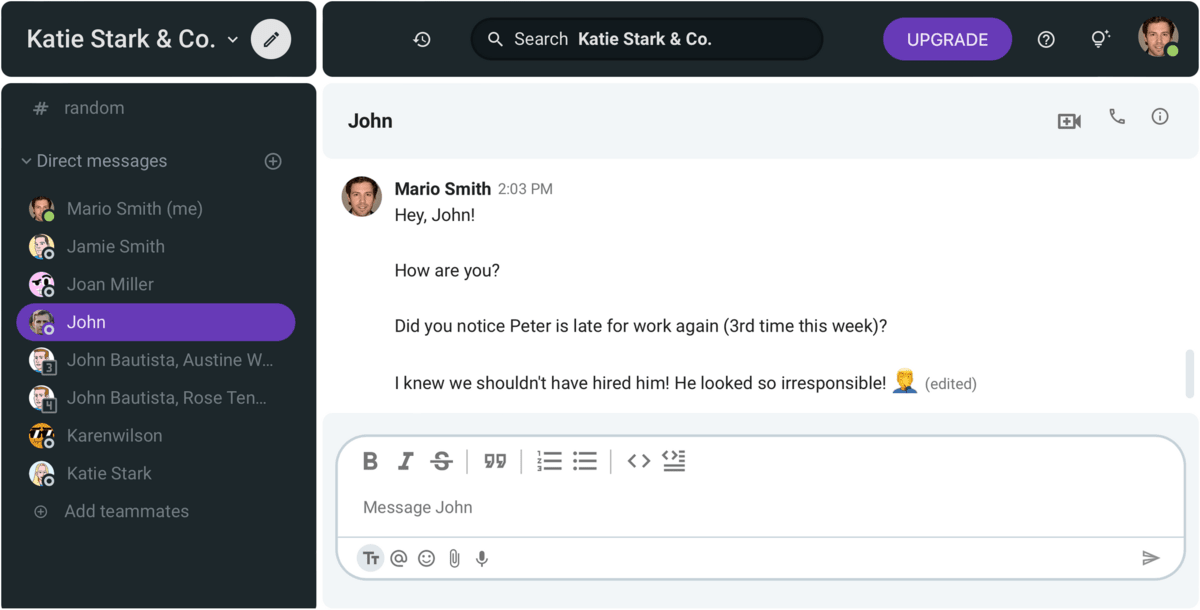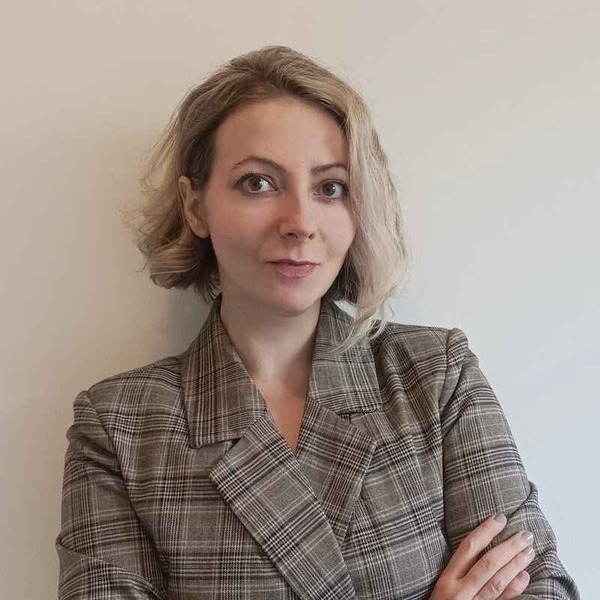Picture this scenario:
You’re late to the most prestigious conference where a CEO of a successful company will be one of the speakers. Somehow, you manage to get a cab, and the driver gives their best to get you there on time. Finally, you get to the hotel where the event is taking place and head to the reception to ask for directions. On your way to the reception, you notice a room attendant and ask for the precise location of the summit. Everything’s fine — you get there on time and get to hear the speech.
Now that we know everything went well, please answer the following questions:
Is the CEO female?
Is the cab driver female?
Is the room attendant male?
Why not?
Because you’ve fallen victim to unconscious biases.
This experiment of ours is inspired by a famous TED talk by Valerie Alexander — How to outsmart your own unconscious bias.
So, the good news is: as almost always, there is something you could do about it.
In this blog post, we’ll cover:
- What unconscious biases are,
- How they impact our workplace,
- Most common unconscious biases, and
- Tips on disrupting them.
Let’s get to it!

Table of Contents
What are unconscious biases?
Unconscious biases, also known as implicit biases, describe our unconscious negative associations with specific groups (women, people of color, elderly, LGBTQ+, etc.).
These biases affect our behavior, judgment, and decision-making, no matter how much we want to be objective.
Unfortunately, we all have them, and they are influenced by:
- Our personal experiences,
- Stereotypes, and
- Cultural context.
More importantly, these unconscious biases usually don’t align with our beliefs and convictions.
For instance, even though you are an outspoken advocate for gender equality, you might subconsciously harbor implicit gender bias.
However, unconscious biases are sometimes confused with similar occurrences — cognitive biases and prejudices.
So, let’s briefly consider the differences between them.
The difference between unconscious and cognitive biases
Did you know that our brain processes 11 million bits of information per second, out of which our conscious brain processes only 50 bits per second?
No wonder it has to take shortcuts, called heuristics, to deal with the constant information overflow.
Both unconscious and cognitive biases are unwanted consequences of heuristics.
Unconscious biases are filters we are not aware of, through which we view the data we get. These filters encompass personal characteristics, including, but not limited to:
- Race,
- Gender, and
- Age.
Our contributor, Lisa Lawless, P.h.D., a Clinical Psychotherapist and the CEO of Holistic Wisdom, Inc., explained:

“Unconscious biases are those we hold without realizing, based on factors like our background, experiences, and cultural norms.”
An example of an unconscious bias would be when a hiring manager unconsciously favors male over female candidates for the role of software engineer. Although not openly sexist, they may harbor gender bias, which leads them to believe that men are better engineers than women.
On the other hand, cognitive biases apply to how we use the data our brain receives from our surroundings.
Lawless further explains:

“Cognitive biases, however, are more related to how we process information and make decisions; sometimes, we can unintentionally skew our thinking in specific directions due to these biases.”
For instance, a cognitive bias called hindsight bias refers to our tendency to convince ourselves after something has happened that we already knew that was going to be the case beforehand.
We’ll illustrate this with a Pumble example.
Our hiring managers from the previous example hired an engineer and soon realized they had made a mistake. Mario, one of the managers, is convinced that he knew they shouldn’t have hired him. What he doesn’t know is that he’s the victim of a hindsight bias.

The difference between unconscious bias and prejudice
Another term frequently confused with unconscious bias is prejudice.
However, these two are as different as chalk and cheese.
Namely, in the podcast Speaking of Psychology: Can we unlearn implicit biases?, Dr. Mahzarin Banaji says:
“Prejudice to psychologists is an explicit, conscious aversion or dislike that one person may have towards groups of people. If I were to say to you, I do not think that women should be teaching at Harvard, that would be an example of something we would call a conscious prejudice.”
On the other hand, unconscious biases affect all of us — even those of us who believe in egalitarianism and equal treatment of all people. Their very name suggests we’re unaware of these biases, and their existence isn’t proof that we’re racists or sexists.
However, Banaji claims they are the roots of prejudice.
—
Now that we know what unconscious biases are and aren’t, it’s time to see how they impact our workplace.
How do unconscious biases impact our workplace?
What is the cost of injustice?
Thanks to research published by the Society for Human Resources Management (SHRM), we know that unfair treatment based on race or ethnicity has cost US businesses $172 billion in the last 5 years.
Believe it or not, that’s not all!
So, let’s see in what other ways unconscious biases affect our workplace.
Disadvantage #1: Unconscious biases negatively affect employee engagement and retention
According to the study Disrupt bias, drive value, unconscious biases have a negative impact on employee engagement. Namely, employees who perceive biases are twice as likely to withhold their ideas or solutions at work.
Aside from that, the same study shows unfavorable effects biases have on retention, as well. As a matter of fact, employees who are victims of bias are 3 times more likely to leave the company.
Disadvantage #2: Unconscious biases hinder workplace diversity
More and more companies are becoming aware of the importance of diversity, equity, and inclusion.
In that light, another contributor of ours, Dr. Liz Wilson, Founder of Include Inc. and a Ph.D. in organizational culture and behavior, highlights biases as the number one disruptors of inclusion in the workplace:

“Bias plays a significant role in exclusion and discrimination in the workplace, as it constantly affects our thinking and, consequently, has the potential to impact inclusive decision-making and actions. That means you need to always proactively seek to be conscious of your own bias, make inclusive decisions, take inclusive action, and demonstrate inclusive behaviors.”
As Dr. Wilson pointed out, there are some steps we can take to overcome our biases and build a more inclusive workplace. But, more on that a little later.
Disadvantage #3: Unconscious biases create unfair disadvantages
Last but not least, members of marginalized groups are at an unfair disadvantage because of their colleagues’ unconscious biases.
According to a study about gender bias against women in science, 48% of surveyed Black women have been mistaken for custodial or administrative workers.
These biases can have a negative impact on the careers of marginalized people, as Lisa Lawless explains:

“For example, we might overlook someone for a promotion without even realizing it’s because of our biases. Or, we might make assumptions about someone’s abilities or intentions based on superficial factors like their appearance. These kinds of biases can also affect communication in the workplace, leading to misunderstandings, conflicts, and missed opportunities for collaboration.”
In other words, effective communication also takes a toll, which can further have negative repercussions on the whole organization.
7 Most common unconscious biases in the workplace
Did you know that 70% of white people associate the notion of good with white and the notion of bad with black?
This is what Dr. Mahzarin Banaji shared with the listeners of the previously mentioned podcast Speaking of Psychology.
If you think that you’re different and you don’t make these associations, maybe it’s time you take one of Harvard’s implicit association tests. The results might surprise you.
Whatever your results might be, don’t worry — we’ll help you overcome your biases.
But first, it’s time we tackle unconscious biases that occur more frequently than others.
Unconscious bias #1: Gender bias
Gender bias occurs when we have an unconscious preference toward one gender over another. This is often the consequence of our deep beliefs about gender roles.
An excellent example of gender bias is the gender pay gap. Research shows that women earn 13% less than men in the same positions.
Aside from that, women are greatly underrepresented in leadership positions. Although there are more women in colleges and they are more successful students than male students, when women enter the workforce, things change.
Unfortunately, people tend to associate the notion of leadership with men. This association is so strong that people had trouble naming a famous female business leader in a recent survey, described in the book Why Do So Many Incompetent Men Become Leaders? by Tomas Chamorro-Premuzic.
He states that a whopping 92% of respondents didn’t have an answer and that 2% of them named “Siri” or “Alexa”.
This is the sad truth because research shows that women are actually better leaders.
Namely, Alice Eagly, a professor at Northwestern University, has done a review of 45 studies on leadership and gender. She found out that women have a more democratic style of leadership than men.
Moreover, she adds that women:
- Elicit more respect from their teammates,
- Communicate more effectively,
- Are better mentors to their juniors,
- Solve problems more creatively, and
- Are more objective.
Unfortunately, women who have managed to break the glass ceiling still face a boys’ club mentality. In other words, even in those organizations, men still make most of the major decisions.
Unconscious bias #2: Racial bias
Have you noticed how, when they care about a cause, white people are usually labeled “passionate” and black people as “angry”?
The explanation for this conundrum is a two-letter word: racial bias.
Racial bias is harboring an unconscious inclination toward one race over others.
However, this doesn’t always mean that the person is racist. It just means their experiences and perceptions shaped them in that way. They typically don’t intend to discriminate against a specific race.
Although not as severe as overt racism, unconscious racial bias also causes great damage to people of color.
For instance, according to Investopedia, there were only 6 Black CEOs on the Fortune 500 list in 2022.
Unconscious bias #3: Name bias
Name bias occurs when people prefer certain names over others.
Usually, this means that, during the process of recruitment, White-sounding names get more attention than African American, Asian, or Hispanic names.
In their research Are Emily and Greg More Employable than Lakisha and Jamal?, Marianne Bertrand and Sendhil Mullainathan performed an experiment to gauge racial discrimination in the workforce.
More specifically, their research showed that having a White name on your resume counts as an additional 8 years of professional experience, as far as the chances for a callback are concerned. In other words, White names get 50% more callbacks for interviews.
If you’re curious to know what these “White” and “Black” names are, here are some of them Bertrand and Mullainathan used in their experiment:
- “White” names: Emily, Anne, Sara, Neil, Brett, Greg
- “Black” names: Keisha, Lakisha, Latoya, Rasheed, Jamal, Darnell
One of the possible solutions for this problem would be the so-called name-blind recruitment, where candidates’ names would be removed from their resumes during the process of selection.
Unconscious bias #4: Age bias
Age bias is our tendency to favor one generation, usually younger, over another.
The most common example of age bias in the workplace occurs as early as in the hiring process. Namely, recruiters sometimes automatically dismiss older candidates’ resumes. Usually, they’re not aware that the reason they’re doing that lies in the negative stereotypes concerning age. In that case, they harbor implicit age bias. If, however, they do it intentionally, it means they are explicit ageists.
However, age bias doesn’t affect only older people, but young ones as well.
According to research How organizations can avoid unconscious ageism bias, companies tend to overlook younger people when hiring, because they think they:
- Lack work ethic and discipline,
- Don’t have enough work experience, and
- Need more training.
Of course, all these reasons are consequences of hiring managers’ age bias. Clearly, someone’s work ethic doesn’t have anything to do with their age.
💡 Pumble Pro Tip
If your workplace is one of the brighter examples of cross-generational collaboration and cohabitation, you might need some help in improving communication with your colleagues from different generations. We have just the blog post for you:
Unconscious bias #5: Appearance bias
Appearance bias occurs when we have an unconscious preference for a certain type of physical appearance or attributes over others.
For instance, research shows taller men are more likely to become leaders.
Namely, in his book Blink: The Power of Thinking Without Thinking, Malcolm Gladwell asks us what we would do if the person we’re interviewing for a job is tall. Consciously, we probably don’t think we’re more inclined toward tall people than short people. We don’t treat them differently, right?
Wrong! The data Gladwell shares with us show the following discrepancy:
“In the U.S. population, about 14.5 percent of all men are six feet or taller. Among CEOs of Fortune 500 companies, that number is 58 percent.”
Although we consciously might not favor taller men, our society obviously harbors strong unconscious appearance bias in favor of them.
Unconscious bias #6: LGBTQ+ bias
LGBTQ+ bias refers to an unconscious attitude toward members of the LGBTQ+ community.
For example, if we assume lesbians don’t get along with men and refuse to pair them with male coworkers, we’re harboring unconscious LGBTQ+ bias.
The good news is that LGBTQ+ bias has declined by 64% between 2007 and 2020, according to the results of previously mentioned Harvard’s implicit association tests.
A possible explanation for this trend lies in the notion called cognitive dissonance.
Namely, let’s say Person A believes being gay is bad, only to find out later on that their child is gay. They have to resolve this conflict — cognitive dissonance — in their mind somehow.
So, they can either shun their child or begin to believe that being gay is not a bad thing like they believed it was.
Unconscious bias #7: Disability bias
Disability bias refers to people’s tendency to unconsciously favor able-bodied people over people with disabilities.
For example, when a hiring manager unconsciously assumes a candidate with a disability will take a sick leave more often than able-bodied people, they have fallen prey to an unconscious disability bias.
Unfortunately, unlike LGBTQ+ bias, disability bias hasn’t been reduced since 2007, as the results of Harvard’s implicit association tests show.
6 Tips on disrupting unconscious biases in the workplace
Now that we’ve briefly covered major unconscious biases, it’s time we help you combat them.
As always, we’ve prepared a few tips that will surely push you in the right direction.
Tip #1: Become more aware of biases
The trouble with unconscious biases is that we’re not aware of them.
In her above-mentioned TEDx talk How to Outsmart Your Own Unconscious Bias, Valerie Alexander talks about how we believe that we’re not biased and that we’re treating everyone equally. Sadly, in reality, that’s not the case.
We all have unconscious biases. They are the direct result of situations we usually found ourselves in — the situations we’re familiar with. That’s how our brain makes shortcuts in thinking — by using our previous experiences.
Moreover, our socialization also plays a role in forming our unconscious biases. Namely, the environment we grew up in had a great influence on us. We’ve unconsciously internalized and accepted the beliefs of the people around us.
However, this is a dangerous terrain, filled with unconscious biases.
For example, we’re more prone to picture a male CEO, because we’re more used to seeing men in high positions.
However, the good news is that we hold the keys to changing this injustice.
Valerie Alexander suggests that we stop and think about the situation we’re in, and ask ourselves:
“Is this how I would handle this situation if this person looked like me, or didn’t look like me?”
By allowing our brain to process information a bit slower, we’re giving ourselves a chance to become aware of the shortcuts in thinking that lead to errors and rectify them.
Tip #2: Create more inclusive policies and practices
To combat our unconscious biases in the workplace, we should strive to incorporate diversity, equity, and inclusion (DEI).
Dr. Liz Wilson shared her opinion on this matter:

“Every way of working in your organization should be designed and implemented so as to result in an inclusive experience for both employees and customers. From team meetings to customer service, and every policy and procedure in between, you should be proactively seeking to identify potential barriers to inclusion in the ways you work and then fill the gaps with more inclusive practice.”
When you surround yourself with diverse coworkers, you’re opening yourself to new experiences and cultures. Aside from that, you’re allowing your brain to get familiar with new situations.
Wilson adds:

“Bias starts to be minimized when ways of working are implemented that require inclusive thinking to navigate the process and successfully achieve outcomes in the organization.”
In other words, you can only benefit from a DEI strategy.
Tip #3: See every person as unique and of value
One way to fight unconscious bias is to make a conscious effort to really see each person as they are, as Dr. Liz Wilson advises:

“When you don’t make assumptions about people, or on behalf of people, it requires you to see people through a different lens. Stop attempting to put people into a ‘box’ based on assumptions. Engage with people and seek to understand them.
Ask:
– ‘How can I best meet your needs?’ or
– ‘How can I support you?’ or
– ‘How can I make this experience better for you?’ or
– ‘How could I do this better?’.
Just remember to listen to the person’s response, and then respond and act accordingly.”
Also, don’t forget that active listening is key to understanding your coworkers.
Tip #4: Break stereotypes by exposing yourself to counterstereotypes
As our stereotypes greatly influence our behavior, we should work on reducing them, or, better yet, getting rid of them.
According to an HBR article on unconscious bias training, women in stereotypically “male” fields, such as technology, tend to behave in ways that hinder their career development.
For instance, they refrain from making suggestions and don’t apply for jobs they are well qualified for.
One solution to this problem is exposure to counterstereotypes. In other words, if we see more women in tech, we are more likely to accept they belong there.
In their study Seeing is believing, Nilanjana Dasgupta and Shaki Asgari found that “the more women see counterstereotypic ingroup members in their immediate environment, the more it undermines their automatic gender stereotypes.”
Interestingly, mere exposure is enough to change your deep-rooted beliefs. You don’t even have to be especially motivated to challenge your unconscious biases.
A striking example of the power of representation and exposure to counterstereotypes is the so-called “Scully Effect”. Namely, according to the research on the Scully effect, 63% of women that work in STEM say Dana Scully from the TV series X-Files served as their role model.
Tip #5: Put yourself in someone else’s shoes
Taking another person’s perspective is a great way to reduce bias against marginalized groups. And, the best news is, you can learn to be more empathetic, thereby minimizing your unconscious bias.
Namely, in a study Perspective-taking and empathy: Generalizing the reduction of group bias towards Asian Americans to general outgroups, White participants were shown clips from the movie The Joy Luck Club.
One group was asked to put themselves in the shoes of the characters. The control group received no such instructions.
The experiment has shown that the first group had less unconscious bias toward people who don’t belong in their group — in this case, Asian Americans from the movie.
💡 Pumble Pro Tip
If you struggle with empathetic communication in the workplace, read our article on the subject:
Tip #6: Consider “blind recruitment”
Last but not least, for all you hiring managers out there, if you want to avoid falling prey to your unconscious biases, consider “blind recruitment”.
It means that, before reading a candidate’s resume, you should remove their name and other identifying information.
This is an efficient way to ensure you won’t let your unconscious biases take charge in the recruiting process. Rather, you’ll hire the most competent candidate.
Extra tip: Use gender-neutral language in recruitment ads
Did you know that women are less likely to apply for a job when masculine wording is used in the description?
In the table below, we have listed some of the words usually associated with male and female stereotypes, respectively.
| Words associated with male stereotypes | Words associated with female stereotypes |
|---|---|
| Competitive | Support |
| Dominant | Understand |
| Leader | Empathy |
| Decisive | Loyal |
| Driven | Patient |
So, instead of using gender-coded terms, opt for something more neutral.
Stick to descriptive titles, such as project manager, software engineer, or video editor. Avoid descriptions such as “marketing ninja” or “coding rockstar”.
Also, minimize the list of requirements and include only the most essential, as an internal Hewlett-Packard study shows that women apply for the job only when they meet 100% of requirements, whereas men apply when they meet around 60%.
Pumble can help you avoid unconscious biases in the workplace
The good news is that we can work on overcoming our biases — starting with following the 6 tips we gave you in this article.
Other than that, you can also carefully pick a communication channel for your company that will ensure as few biases slip through as possible.
Pumble, a team communication app, is an excellent pick for everyone trying to make their workplace bias-free (or as close to as possible).
First, Pumble displays pictures of every professional in our workspace. So, it is almost impossible to make a mistake caused by racial or gender bias while sending a direct message to someone or posting something on channels.
Second, Pumble allows you to get to know your coworkers or employees better and have open, transparent conversations with them that will lead to diminishing your biases. All you have to do is schedule an audio or video call.
Finally, to make sure your employees or coworkers don’t unintentionally let something slip during conversations in official channels, you can create general, organization-wide channels and only give posting permission to select few who will ensure their posts aren’t biased.
By incorporating it into your daily routine, Pumble can help you work on recognizing and overcoming your biases — so try it out now.





